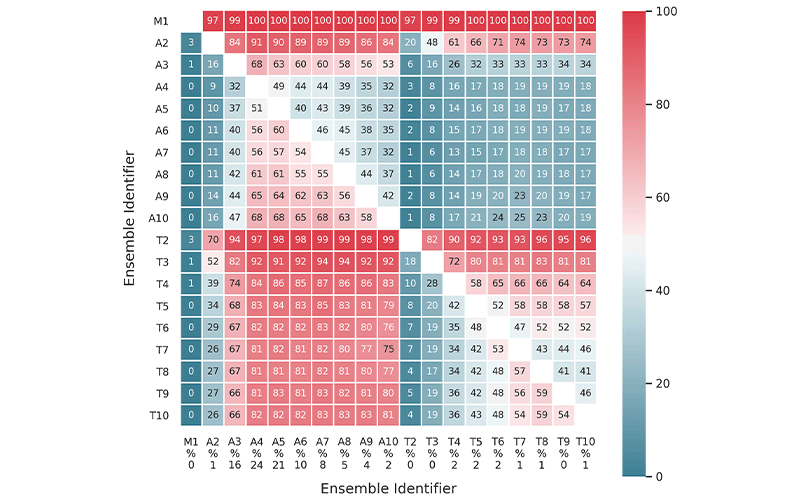Ensembling Improves Machine Learning Model Performance
Radiology researchers analyze models for automatic bone age estimation

Ensembles created using models submitted to the RSNA Pediatric Bone Age Machine Learning Challenge convincingly outperformed single-model prediction of bone age, according to a study published in Radiology: Artificial Intelligence.
Model heterogeneity is an important aspect of ensemble learning. Ensemble learning is a method in machine learning (ML) in which different models designed to accomplish the same task are combined into a single model. Ensembles tend to perform best when each of the individual models performs well in their own right, and the correlation among individual model predictions is relatively low.
Because ensembles benefit from low correlation between model predictions, the greater the underlying differences in approach, the greater the improvement, as long as they achieve similar performance. In this respect, a competition, in which participants are encouraged to submit their best models, provides an ideal setting from which to ensemble high-performing models that use different techniques.
“Competitions provide a unique opportunity to study the effects of combining predictions from heterogenous models,” said study author Ian Pan, a medical student at The Warren Alpert Medical School of Brown University in Providence, RI.
To investigate improvements in performance for automatic bone age estimation that can be gained through model ensembling, Pan and colleagues used 48 submissions from the 2017 RSNA Pediatric Bone Age Machine Learning Challenge.
Ensembled Models Lowered the Estimated Generalization of Bone Age
Participants were provided with 12,611 pediatric hand X-rays with bone ages determined by a pediatric radiologist to develop models for bone age determination. The final results were determined using a test set of 200 X-rays labeled with the weighted average of 6 ratings. The researchers evaluated the mean pairwise model correlation and performance of all possible model combinations for ensembles of up to 10 models using the mean absolute deviation (MAD). To estimate the true generalization MAD, they conducted a bootstrap analysis using the 200 test X-rays.
The estimated generalization MAD of a single model was 4.55 months. The best performing ensemble consisted of four models with a MAD of 3.79 months. The mean pairwise correlation of models within this ensemble was 0.47. In comparison, the lowest achievable MAD by combining the highest-ranking models based on individual scores was 3.93 months using eight models with a mean pairwise model correlation of 0.67.
“Our results call attention to a concept that has substantial practical implications, as computer vision and other machine learning algorithms begin to move from research to the clinical environment,” Pan said. “Namely, that the best results are likely to be achieved by combining multiple accurate and diverse models rather than from single models alone.”
Thus, practitioners aiming to incorporate ML algorithms into their workflow would benefit from having predictions obtained from different models, similar to how the accuracy of a radiological interpretation can be bolstered with multiple readers.
Pan added that the findings also highlight the importance of open competitions like the 2017 RSNA Pediatric Bone Age Machine Learning Challenge, as they provide a standardized use case, a common training set, and an objective assessment method applied equally to all models.
“Machine learning competitions within radiology should be encouraged to spur development of heterogeneous models whose predictions can be combined to achieve optimal performance,” he said.
For the 2019 RSNA Intracranial Hemorrhage Detection and Classification Challenge, researchers worked to develop algorithms that can identify and classify subtypes of hemorrhages on head CT scans. The data set, which comprises more than 25,000 head CT scans contributed by several research institutions, is the first multiplanar dataset used in an RSNA artificial intelligence challenge.
For More Information
Access the Radiology: Artificial Intelligence study,Improving Automated Pediatric Bone Age Estimation Using Ensembles of Models from the 2017 RSNA Machine Learning Challenge. Read a commentary on the study, Making AI Even Smarter Using Ensembles: A Challenge to Future Challenges and Implications for Clinical Care.
